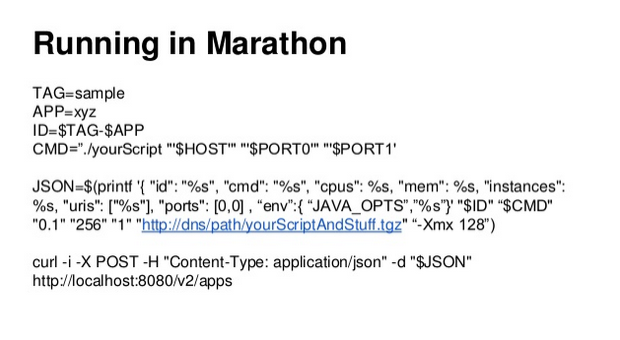The other evening I went to a very informative talk by Joe Stein on Apache Mesos at the New York City DigitalOcean Meetup. I have to say that I’m very impressed with DigitalOcean organizing meetups about interesting technology that they use in their stack. Ever since I first saw DigitalOcean at the New York Tech Meetup several years ago, I knew they were going to go places because of their strong developer orientation — a niche that Amazon Web Services has consciously left behind in the pursuit of enterprise cloud adoption.
Although I learned a lot from the talk, something that Joe said at the very end about “no longer needing configuration management like Chef or Puppet” made me roll my eyes yet again. I’ve also heard people say sentences like, “we have Docker now, we don’t need configuration management.” My reaction really has nothing to do with the fact that I work for Chef. If there truly is a configuration management killer out there, I would love to know about it, and if it is real, I would seriously contemplate quitting my job and going to work for that vendor.
My objection is basically that declaring the death of configuration management is a really naïve way of thinking. Do you still need to configure things when running applications under Mesos? Yes? Then you still need configuration management! Many of these presentations about the new-hotness-funnily-named-hipster-technologies have a slide that looks something like this (I’ll pick on Joe here again for a minute):
This looks like a shell script that you cooked up on your laptop! Moreover, that payload (yourScriptAndStuff.tgz) that Mesos is going to unpack and run in your cluster — how did it get created? More shell scripts!
In sum, I mostly object to the cognitive dissonance that I detect from these types of presentations. Let’s see: Mesos is a system that gives me a “data center operating system” to abstract all the compute resources like CPU, memory, disk, etc. I can simply declaratively state which of those I need, and a bunch of schedulers and executors will pick up my job and run my job somewhere appropriate. That’s great. Now how do I actually use this tool? I write a bunch of imperative scripts? What? Why would I want to do that?
Docker suffers from a similar problem. Okay, so you’re giving me a wonderful abstraction called the “container”, which is a portable, self-contained runtime image for my application. I can run it anywhere! That’s awesome. How do I build it? Oh, I have to write a “Dockerfile” which appears to be a cross between a Makefile a shell script, and CONFIG.SYS. I’m not sure how that’s scalable when I have 500 applications and 20 versions of each.
The whole point of configuration management is to give you a declarative interface to something you would have done imperatively, because it’s easier to understand and maintain declarative statements rather than imperative ones. And so long as we have computers, we have things that need configuring. Unless you want to spend your days building things by writing one-off scripts, you need configuration management.

“…because it’s easier to understand and maintain declarative statements rather than imperative ones” – bullshit. Make and bash are very well understood and have been around a lot longer. Declarative configs are unnecessary overhead when you can instantiate new instances in AWS on demand.
Here’s some code: https://github.com/revmischa/udo
As someone who has previously tried to do this work with horrible bash scripts (and maintained them) I totally disagree with you. It’s “easy” if you have trivial use cases requiring short scripts, but as you can see by the Marathon slide I put up, it becomes unparseable spaghetti very quickly. You also can’t use longevity as an argument here; it’s about functionality and cleanliness.
+1 I completely agree with you here, Julian.
If you’re versioning golden images or even Dockerfiles, you’re doing configuration management. And as the complexity of those configurations grows, you’ll start to have problems (consistency, auditing, automation, secrets injection) and tooling (CI and CD, linting, auditing, testing) that are conceptually similar to what exists in the configuration management space today.